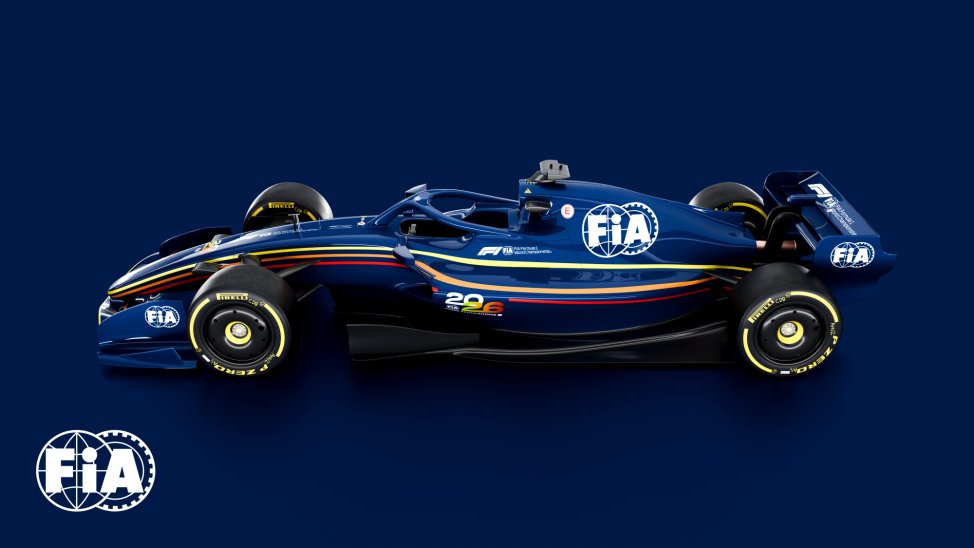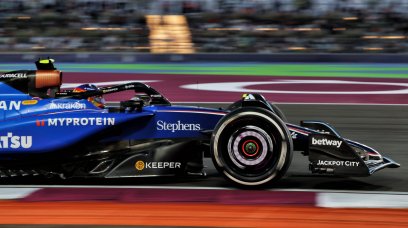The FIA has formally revealed the regulation changes that will come into play for the 2026 Formula 1 season.
Regulation changes are commonplace in F1, with a major change occurring every few years as technology improves.
The latest significant overhaul will see seismic alterations to the cars to the power unit side, as well as the chassis and aerodynamics.
But what is changing for the 2026 F1 campaign?
RacingNews365 takes you through all the changes below!
Power Unit
- First published in August 2022, the power unit regulations provide for a major leap forward. Building on the foundations of the world’s most efficient hybrid engine currently used in Formula 1, the 2026 power unit delivers even more power than the current PUs. While the power derived from the ICE element drops from 550-560kw to 400kw, the battery element increases massively, from 120kw to 350kw – an almost 300% increase in electric power. Performance is therefore maintained, while sustainability is increased even further.
- By simplifying the power unit through the removal of the MGU-H and the expansion of electrical power, the 2026 power is the most road relevant yet seen in Formula 1, and in tandem with 100% sustainable fuel provides a forward-thinking platform for transferrable future innovation.
- Additionally, the amount of energy that can be recuperated during braking is doubled, resulting in a total recuperable energy of 8.5 MJ per lap.
- A Manual Override mode has been included to created improved overtaking opportunities. While the deployment of a leading car will taper off after 290kph, reaching zero at 355kph, the following car will benefit from MGUK Override providing 350kW up to 337kph and +0.5MJ of extra energy.
- Designed to attract new manufacturers to the sport, the regulations have led to commitments from existing suppliers such as Ferrari, Mercedes and Renault, the return of Honda as a manufacturer and the arrival of Audi and Red Bull Ford Powertrains.
Chassis
- Designed to be smaller and lighter than the current generation of cars, the dimensions of the car have been altered and to adhere to the ‘nimble car’ concept at the heart of the new rules. The wheelbase drops from a maximum of 3600mm to 3400mm, while the width has been reduced from 2000mm to 1900mm. The maximum floor width will be reduced by 150mm.
- Weight reduction has been a key goal and 2026 cars will have a minimum weight of 768kg – down 30kg on their counterparts from 2022. This is made up of 722kg Car and Driver + 46kg estimated tyres mass.
- Downforce has been reduced by 30% and drag by 55%.
- The 18-inch wheel size introduced in 2022 is being retained, though the width of the front tyres has been reduced by 25mm and the rears by 30mm but with minimal loss in grip.
Aerodynamics
- The 2026 cars will also benefit from all-new Active Aerodynamics systems. The system, involving movable front and rear wings, will result in greater cornering speeds with standard Z-Mode deployed. On straights drivers will be able to switch to X-Mode a low-drag configuration designed to maximise straight-line speed.
- A three-element active rear wing will be adopted, while the lower beam wing has been removed and end plates have been simplified.
- The front wing will be 100mm narrower than currently and will feature a two-element active flap.
- In contrast to the current cars, front wheel arches will be removed, and part of the wheel bodywork will be mandated, to help achieve optimal wake performance.
- In-washing wheel wake control boards will sit on the front of the side pods to assist with the control of the wheel wake.
- The cars will feature a partially flat floor and a lower-powered diffuser, which will reduce the ground effect and reduce the reliance of the cars on ultra-stiff and low set-ups.
Safety
- The FIA’s rigorous pursuit of safety is upheld in the 2026 Formula 1 regulations.
- Revised front impact structure regulations introduce a two-stage structure to avoid incidents in recent years where the front impact structure (FIS) has broken-off close to the survival cell after an initial impact, leaving the car unprotected for a subsequent impact.
- Side intrusion protection has been increased. The new specification gives improved intrusion protection around the cockpit and more than doubles the protection given by the side of the fuel cell. Additionally, the improved intrusion protection will be achieved without adding weight.
- Roll hoop loads have been increased from 16G to 20G in line with other single seater formulas and test loads increased from 141kN to 167kN.
- Rear wing endplate lights will be homologated and significantly more visible/bright than current ones. Lateral safety lights will be introduced to identify the ERS status of a car stopped across the track.
- The GPS antenna is being repositioned to improve sensitivity and to allow for future developments in active safety.
Sustainability
- From 2026 Formula 1 power units will run on fully sustainable fuel, underscoring the commitment to environmentally responsible racing and setting a new standard for motorsport.
- This fuel will be ‘drop-in’, meaning it can be used in almost any ICE-powered vehicle, offering a potentially game-changing solution to greenhouse gasses in the transportation sector. By 2030 there will be 1.2bn ICE cars on the road worldwide and the fuel developed for Formula 1 could be used to reduce emissions on an industrial scale.
- Sustainability will be enhanced through greater use of electric power in the 2026 power units and a shift to towards a 50% electrical and 50% thermal power distribution.
- The 2026 regulations are in line with the FIA objective of reaching Net Zero carbon by 2030.
What are your initial thoughts on the new F1 regulations? Let us know by commenting or voting below in the latest RacingNews365 poll.
Don't miss out on any of the Formula 1 action thanks to this handy 2026 F1 calendar that can be easily loaded into your smartphone or PC.
Download the calenderMost read










Join the conversation!